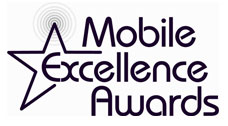What is Airborne best known for in the mobile space?
Airborne was one of the early entrants into the mobile marketplace. The company has partnered with prominent brands to bring those brands to mobile. In the early days, that included Disney and HBO. Today our portfolio includes Maxim, Family Guy, NHL Mobile, and Speed Channel. We work with them to be able to take their brands and properties and bring them into the mobile space. It’s important that we develop the right product mix for the brand we’re working with.
We span all mobile product lines. We do graphics and ringtones and ringback tones, WAP applications, mobile games and applications, SMS and video and we’re really expanding to include some of the emerging product lines as well.
What is your most successful product?
The biggest revenue generator over the last couple of years has been wallpaper. Wallpapers are still huge.
What do you see as the up and coming revenue earner?
We’re starting to move into opportunities in WAP advertising. We do some WAP sites for our brand, for Maxim and the NHL. I think there’ll be a lot of growth potential for WAP advertising. Another growth area for us is mobile promotions. We’re seeing some great success in that area. We just did one with Taco Bell in Canada.
What is your involvement in producing original video content for the mobile platform?
We were really fortunate to work with Verizon and Sprint early on for video. Currently we are managing the programming of three channels for Verizon V Cast: the Maxim channel MaximToGo, the NHL channel and a comedy channel just rebranded Vidiotic.
What does it mean to manage a channel?
We source out the content. We handle working with partners on formatting the content or we do some formatting ourselves. Making sure the content is refreshed and available for consumers. So we handle it from start to finish.
We also do some originally produced content as well, for the Vidiotic channel. Our approach to that channel has been to be a little more edgy and underground in the kind of content we’re programming. Because we know we’re going up against the Comedy Centrals, which have access to marquee names and bigger budgets. Our approach is a little bit more on the viral side, closer in spirit to what we might see on YouTube or Heavy. It’s more the indy approach to comedy programming.
What about the 3rd party content?
We find content that is already produced but doesn’t have a distribution avenue for mobile for North America. We have companies that approach us as well as we’re out there scouring the web.
We’re looking for content across the board. We have two categories: Too Stupid for TV and Eyeball Glue. Those are short-form sketch comedy. But we’re branching out into original productions, where we act as Executive Producers and help fund the project. Two in particular are Bitchin’ Kitchen, which is a very edgy comedy cooking show. The clips are averaging between one and two minutes. Then Mobile Wingman is another property we’re excited about. It’s a made-for-mobile content project with a guy who gives dating and life advice to clueless people. Those are also one to two minutes. We generally do short easily digestible clips.
Our approach has been to grab somebody quick and pull them in. Two of the acronyms we use to describe our video strategy are WTF (what the fuck) and LOL (laugh out loud). That’s the kind of content we’re looking for. Things a little more offbeat, a little edgier than you’d find in traditional comedy programming, things that push the boundaries.
What kinds of production companies do you work with? Are they traditional production companies?
Most of the companies do web programming. Not TV production companies; it’s difficult to take existing broadcast content and use it for the mobile screen. It really needs to be mobile specific. It’s difficult to repurpose existing content.
Why?
When you take something designed for a much bigger screen and then reduce it down to mobile’s 200×200 resolution, you won’t see anything. You’ll see tiny figures. Also, the viewer’s attention span is much shorter. You need to get someone’s attention quickly and get in and get out.
Do you think video is going to be a bigger part of your mix going forward?
We are definitely broadening the programming. We’re trying to bring more to the table for the carriers so that the content is really designed for mobile, fresh and innovative and high quality. Anyone can do a quick home video clip with their phone and upload it to YouTube. We want to get the same feel but with quality content.
For Maxim we’re working closely with the brand. They’re providing a lot of content and we’re doing a little bit of comedy content in with the mix.
Bitchen Kitchen isn’t launched yet. We’re wrapping up the content with the other producers and talent and we’re acting as executive producers. They’ve sourced the talent. The person starring in it has done a lot of the writing. It’s being produced in Montreal.
KSenn@airborne-e.com








